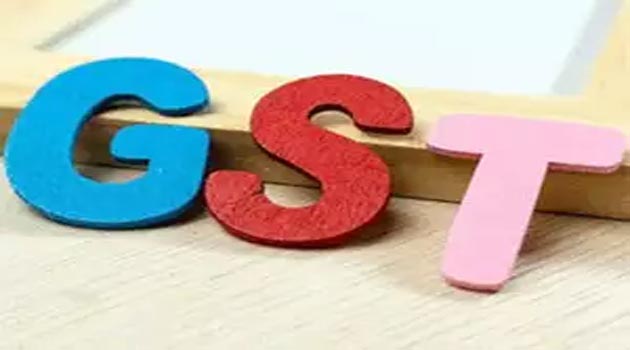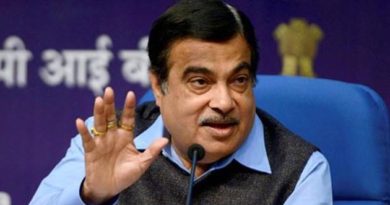A STUDY ON PROSPECTS FROM GST IN INDIA
INTRODUCTION
GST – the Goods and Services Tax is catching attention of every person belonging to the concerned government department, business community and apex bodies of trade and commerce in India. This proposed levy of GST in new in Indian context whereas more than 140 countries of the world have already implemented the GST system. The implementation the GST in India is expected to being a great change in the indirect tax structure of the country.
GST – ITS MEANING
GST is a tax on both goods and services. Presently in India, tax levied on services is known as service tax, whereas tax levied on goods at the time of manufacturing is known as excise and at the time of sale is known as VAT/ sales Tax. GST is a comprehensive value added tax on the supply of goods and services. It is a multipoint tax like VAT which is service leviable at each point of sale or provision of service, in which at the time of sale of goods or providing the services, the seller or service provider can claim the input credit of tax which he has paid while purchasing the goods or procuring the service.
OBJECTIVES OF THE STUDY
GST is proposed to be levied in India from April 2013. Keeping this in mind, the present article has been developed to examine the revenue growth from GST in India and to see the prospects of GST from the perspective of industry, trade and agriculture in India.
Collection of data
For the purpose of the study, the required data have been collected from both primary sources and secondary sources.
The primary data have been collected through personal interviews with registered dealers, tax officials, tax consultants etc. The sources of secondary data are the data available at various tax department, at website and published data in journals & newspapers.
Prospects of GST in India:
The empowered committee describes the GST as – “a further significant improvement – the next logical step – towards a comprehensive indirect tax reforms in the country.” In deed, it has the potential to be single most important initiative in the history of India. It can pave the way for modernization of tax administration – make it simpler and more transparent and significant enhancement in voluntary compliance. If properly designed and administered, it can raise the revenue of the Government to a great extent. Thus, the prospect of GST in the country has been enumerated below –
-
GST and the Revenue growth:
GST with broad tax base and well administration can increase the revenue of the government to a great extent. For example – when the GST was introduced in Newzealand in 1987, it yielded revenues that were 45% higher than the previous year’s collection (Poddar S and Ahmed E 2009). It’s more neutral and efficient structure could yield significant divided to the economy in increased output and productivity.
-
Prospects for a simple taxation system under GST:
The present tax system is a complex one mainly because of existence of numbers of taxation. Again there is distinction between goods and services so far as tax is concerned, it becomes complex owing to the inseparability of goods from services in a composite product as to which element constitutes, goods and which element of a product or activity constitutes service. Under GST regime when number of existing taxes would be subsumed and at the same time no distinction between goods and services would exist, the system of indirect taxation in the country would become a simple one.
-
Prospects for the industry, trade and agriculture under GST:
GST can give more relief to industry, trade and agriculture through a more comprehensive and wider coverage of input tax set off and service tax set off, subsuming of several Central and State Taxes in the GST and phasing out of CST. The transparent and complete chain of set offs which will result in widening of tax base and better tax compliance may also lead to reduction of tax burden of an average dealer in industry, trade and agriculture.
Decrease in tax rates on many goods used as input can decrease the cost of production and increase the competitive ability of the domestic producers.
-
Prospects for the small entrepreneurs and small traders:
The present threshold prescribed in different state VAT Acts below which VAT is not applicable varies from state to state. The existing threshold of goods under state VAT is Rs. 5 lakhs for major bigger states and a lower threshold for North-Eastern states and a special category states. A uniform state GST threshold across states is desirable and therefore, the empowered committee has recommended that a threshold of gross annual turnover of Rs. 10 Lakhs both for goods and services for all the states and Union territories may be adopted with adequate compensation for backward states, where lower threshold has prevailed in the VAT regime. Keeping in view the interest of small traders and small scale industries and to avoid dual control, the states considered that the threshold for Central GST for goods may be kept at Rs. 1.5 crore and the threshold for services may also be kept appropriately high. This raising of threshold will protect the interest of small traders. A composition scheme for small trader and business has been proposed under GST. This will give relief to some extent to the small traders and businesses reducing the accounting work and procedural formalities.
-
Prospects for the exporters:
The subsuming of major Central and States taxes in GST, complete and comprehensive set off of input tax on goods and services and phasing out of CST would reduce the cost of production of goods and services manufactured locally. This will increase the competitiveness of Indian goods and services in the international market and give boost to Indian exports. The uniformity in tax rates and procedures across the country will go a long way in reducing the compliance cost.
-
Benefits of GST to the Consumers:
The burden of taxation ultimately is borne by the common people. Effect of taxation will be reduced by way of subsuming the various taxes and phasing out CST. So the ultimate burden of taxation will also be reduced. Currently, the combined indirect tax on most of the goods is around 20%. The proposed GST rates are 8% to 10% for lower slab and 16% to 18% for higher slab. So, if such rates will remain, then the prices of the goods are expected to fall in the long run.
-
GST : Equity and Poverty Reduction:
Poverty reduction should continue as the central objective of economic policy making in India. Any policy for poverty reduction must enable the provision of, at least, food, clothing, shelter, education and health.
At present, primary food articles like rice and wheat are liable to tax by many states either by way of purchase tax or sales tax at a lower rate. As a result, the incidence of tax on primary food articles comprises of two elements: tax on inputs and tax on output (primary food articles). However, under the proposed GST, all food items covered under the Public Distribution System (PDS) are proposed to be exempt from GST. As a result primary food articles like rice and wheat would be exempted from GST (i.e. there will be no output tax). Hence, the tax incidence on such items of mass consumption will be limited to tax on inputs. Since expenditure on food constitutes a large proportion of the total consumption expenditure of the poor, the GST is designed as a pro-poor policy initiative. In any case, the poor will continue to have accessibility to these items at subsidized prices through the public distribution system. Therefore, the poor will not suffer any additional burden on their consumption of food items due to the implementation of GST.
-
GST and vertical balance of power between centre and the states:
Under the proposed GST, both the centre and the states will have concurrent power to tax all goods and services. Therefore, the taxing powers of the states would now also extend to services which comprises more than sixty percent of the GDP and also constitutes the fastest growing sector in the economy.
Implementation of GST across goods and services is expected to provide gains to India’s GDP somewhere within a range of 0.9 to 1.7 percent. (Government of India, 2008).
CONCLUSION
The implications of switch over to the proposed GST are indeed far-reaching. Every stakeholder stands to gain. This has the potential to transform not only the tax system in the country but also the way we organize and do business. This will also have an indirect positive impact on direct tax collections of the government. Thus, the country as a whole has lots of prospects from GST. What is required is the designing of a suitable model of GST for India and proper administration of it to bring a complete reform in the indirect tax structure of the country.
REFERENCES
Empowered Committee of State Finance Ministers (2008): “A Model Roadmap for GST in India”, New Delhi
Poddar S and Ahmed E (2009): “GST Reforms and intergovernmental consideration in India”, VAT and Service Tax cases, Vol 23, March
Government of India (2009): “Task Force Report on GST”, New Delhi
www.google.co.in/gstindia.com
www.taxmann.com
AUTHOR
Dr. Kaveeta Maheswari
Assistant Professor, Gauhati Commerce College
&
Dr. Sujit Sikidar
Professor, Deptt. of Commerce, Gauhati University
Published : Banking Finance Magazine, April 2013




